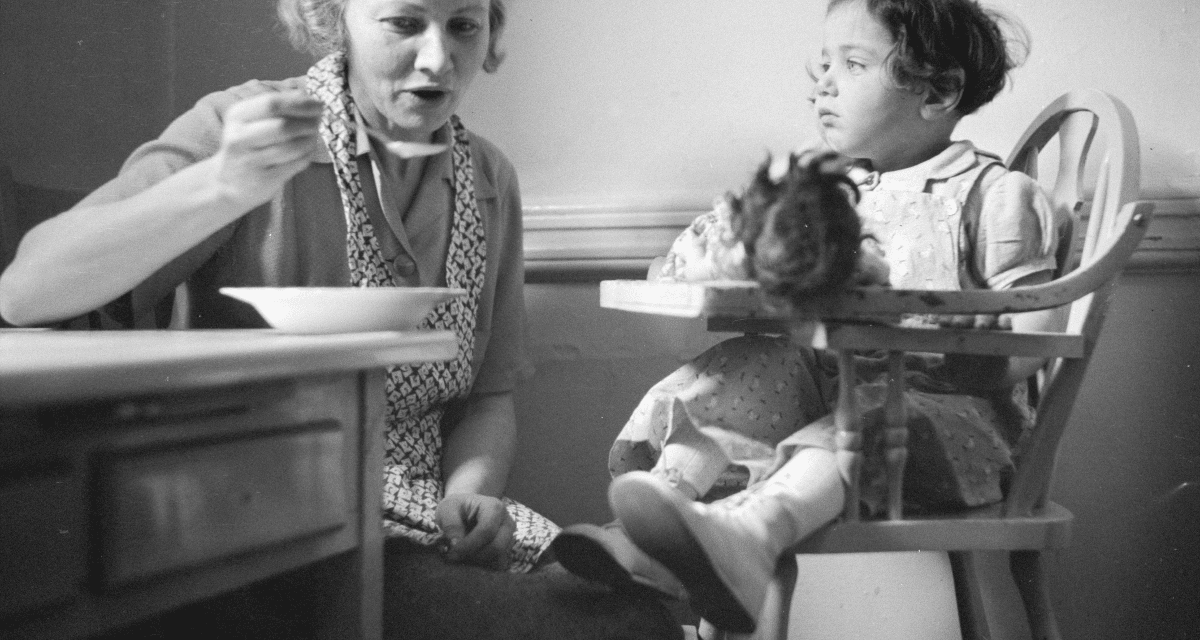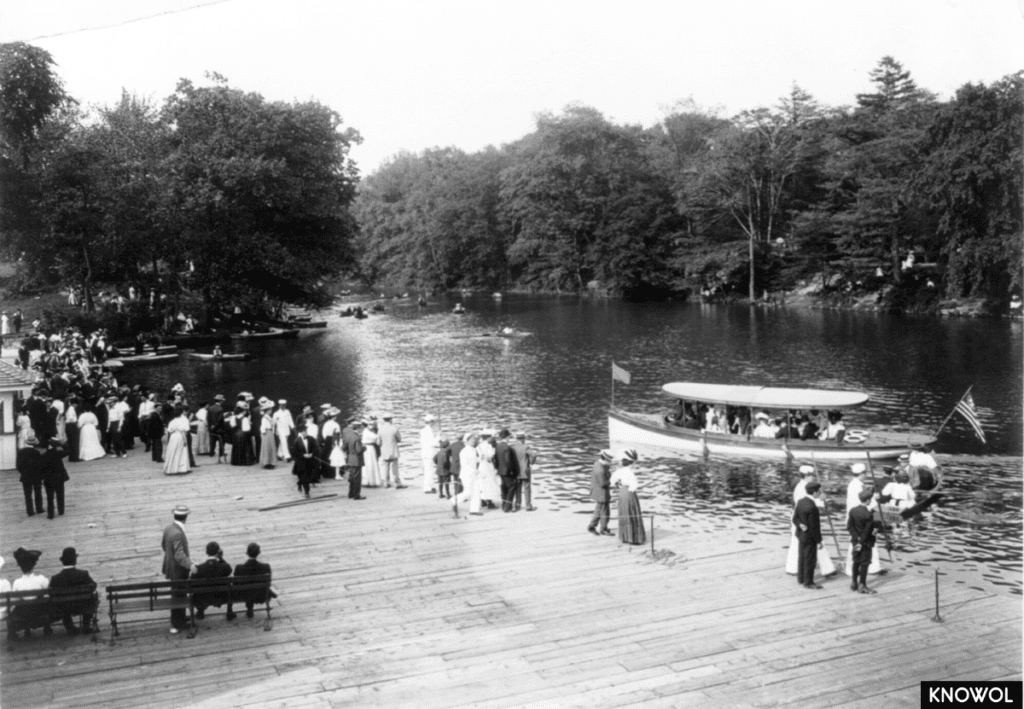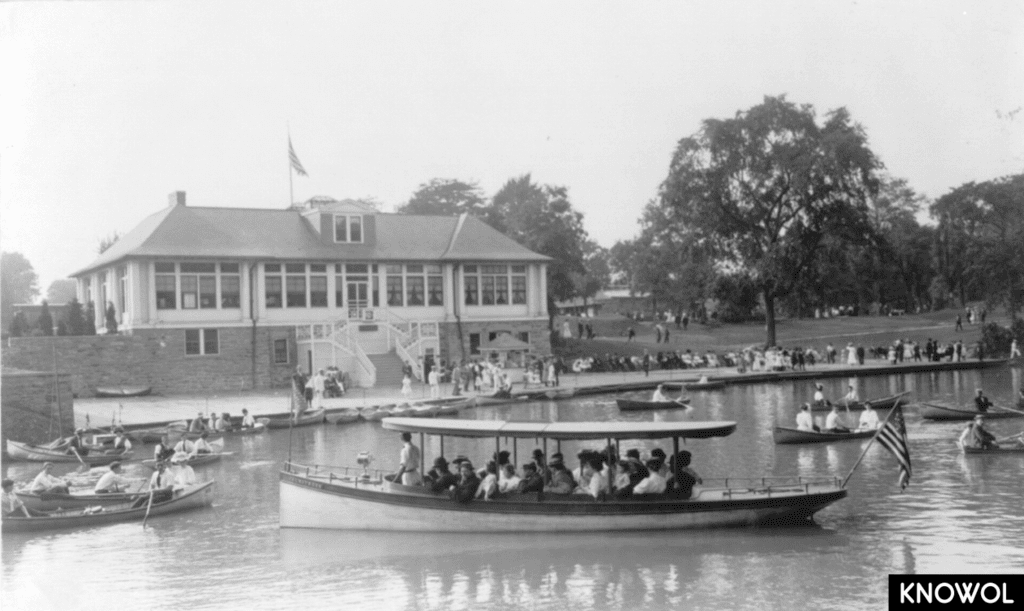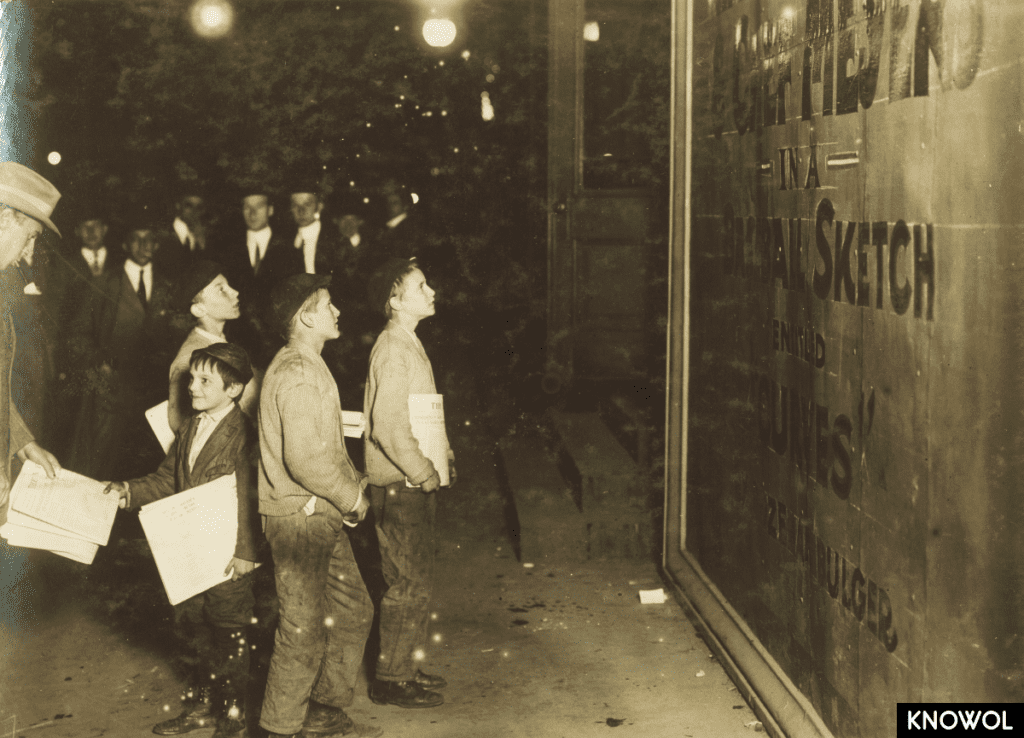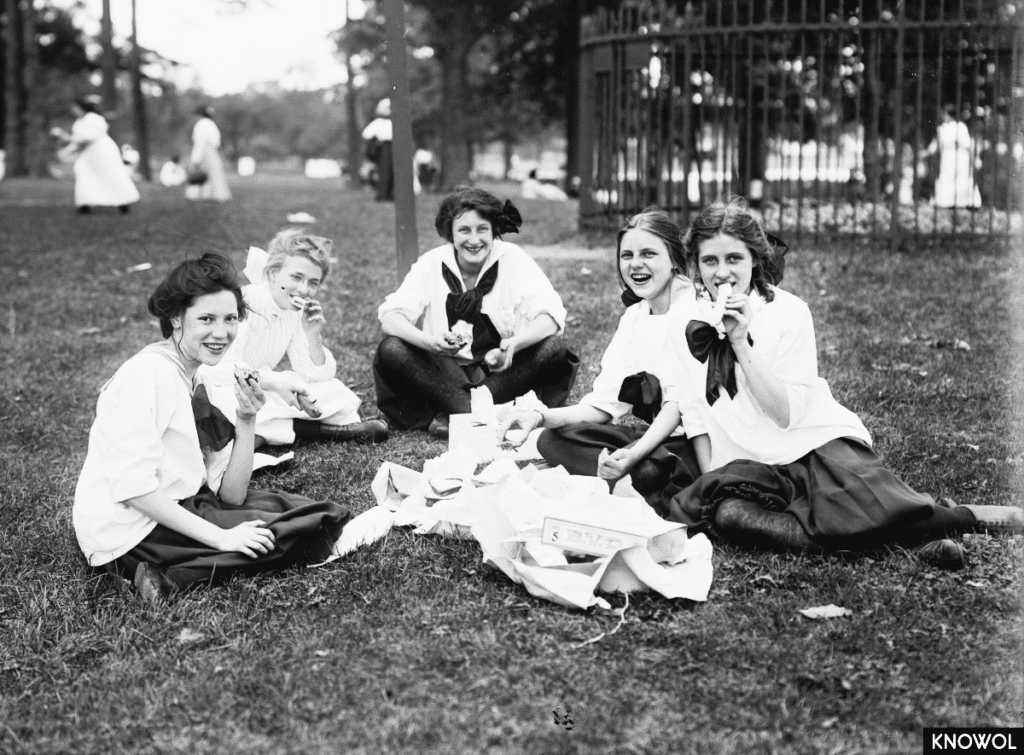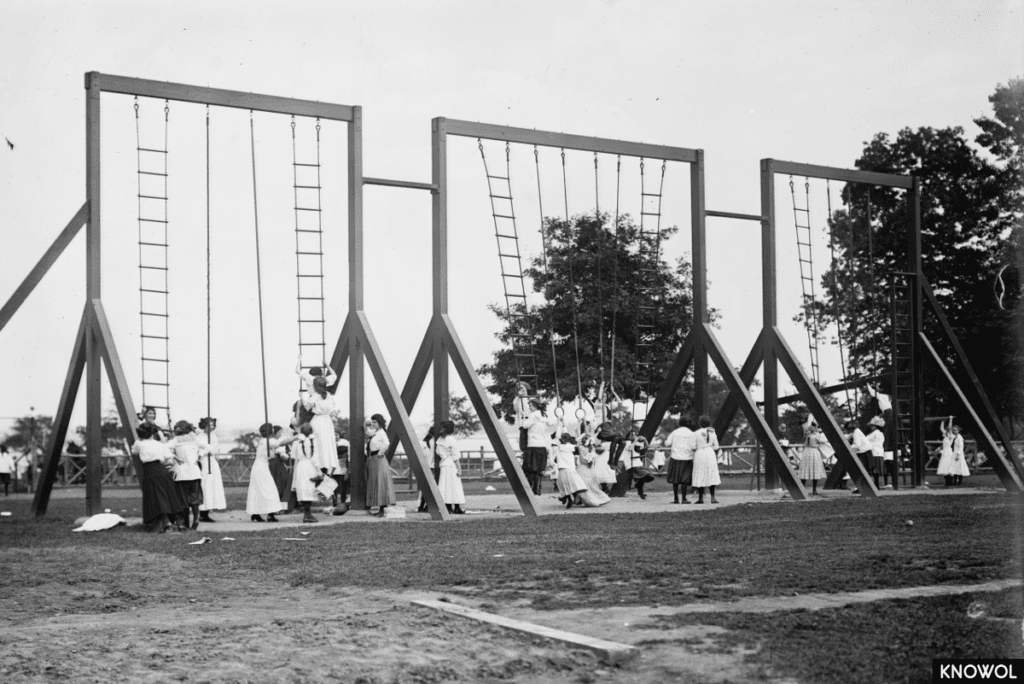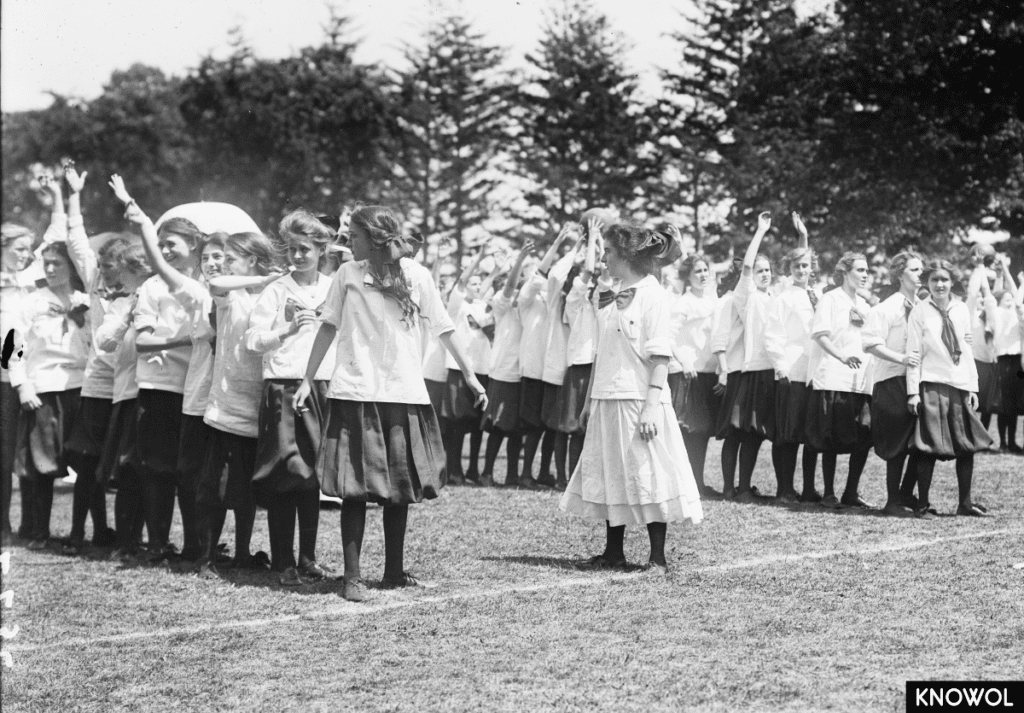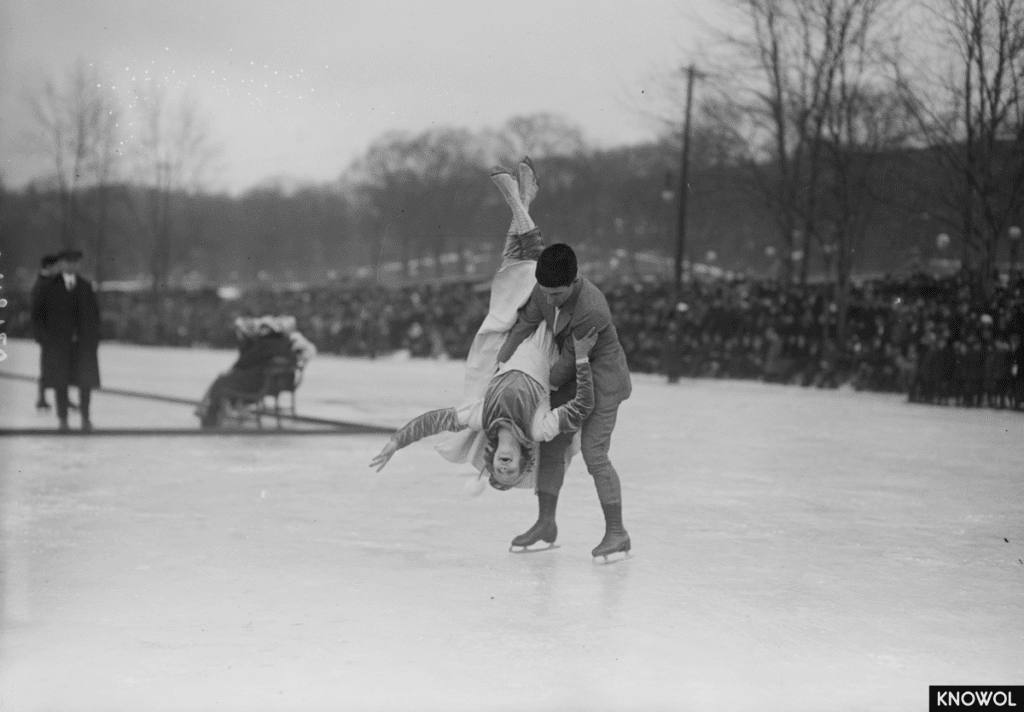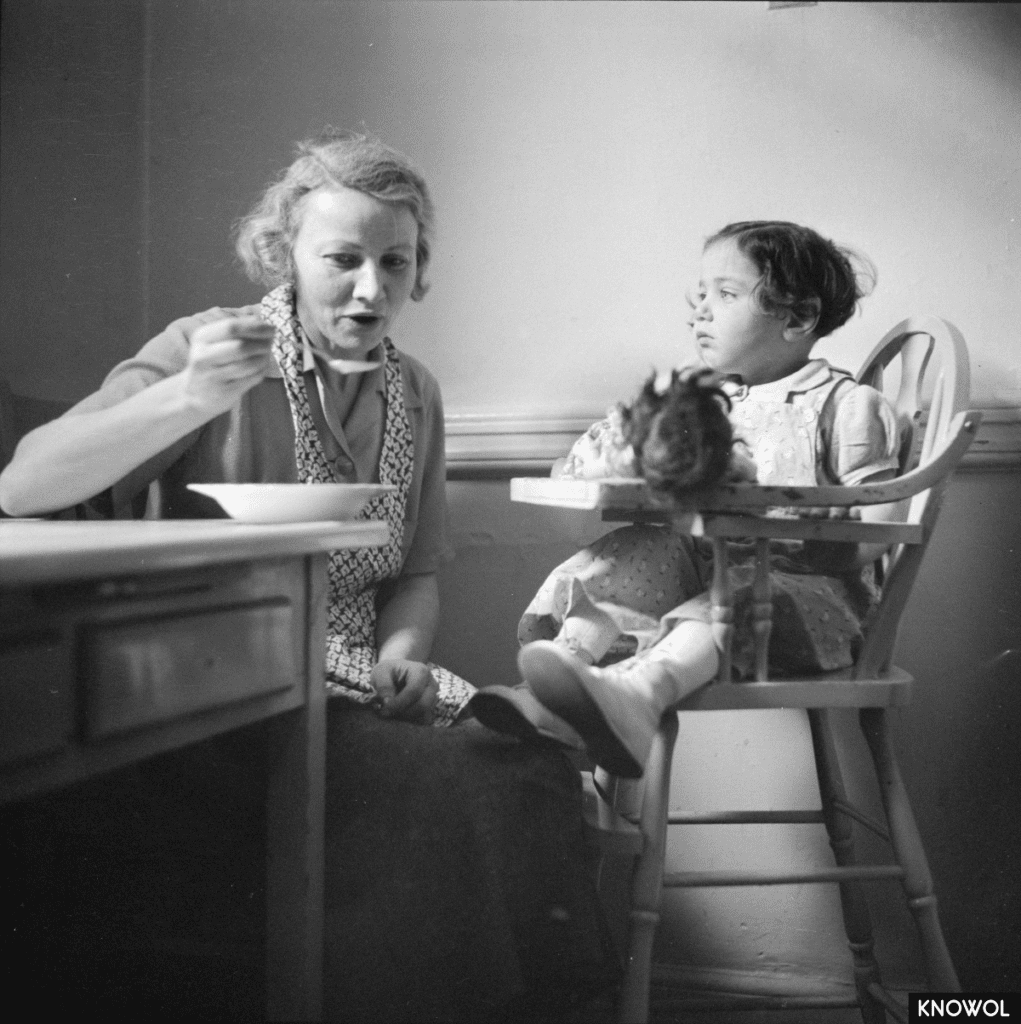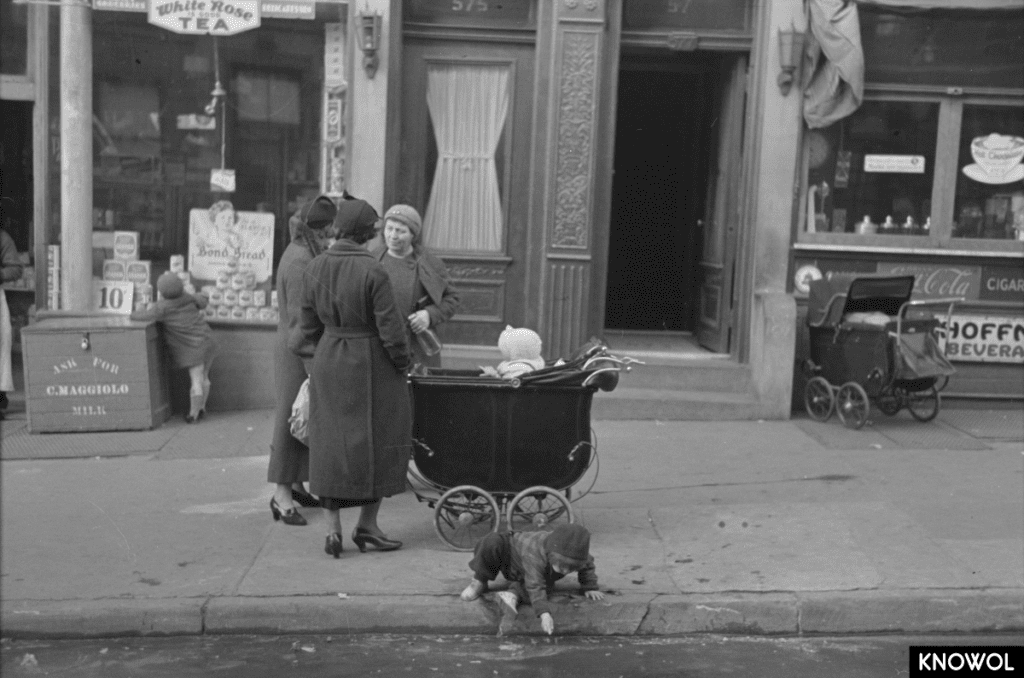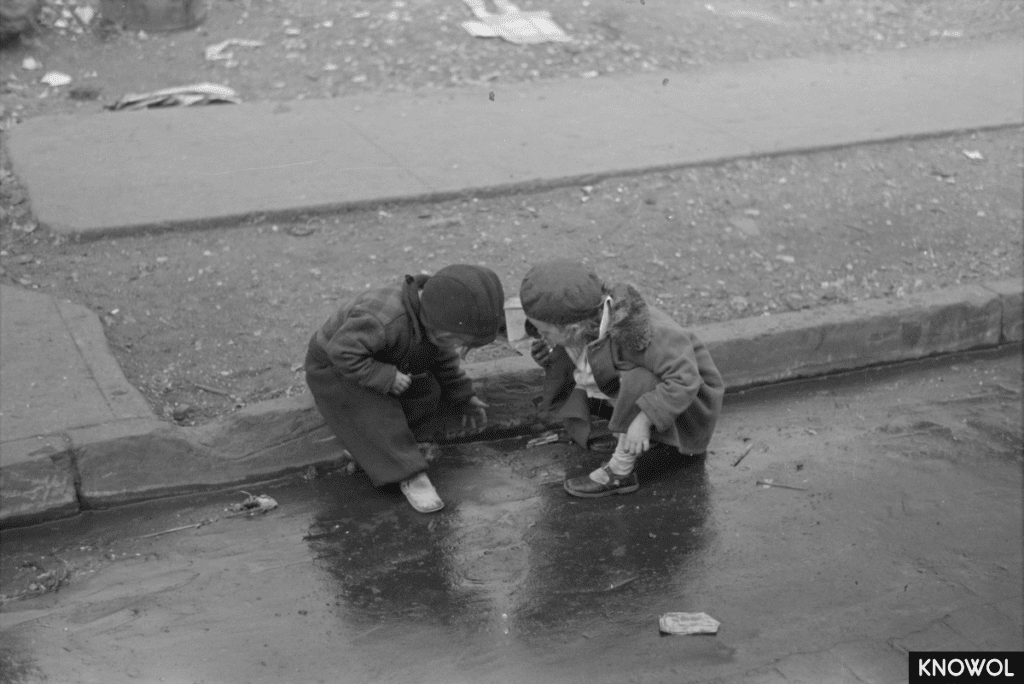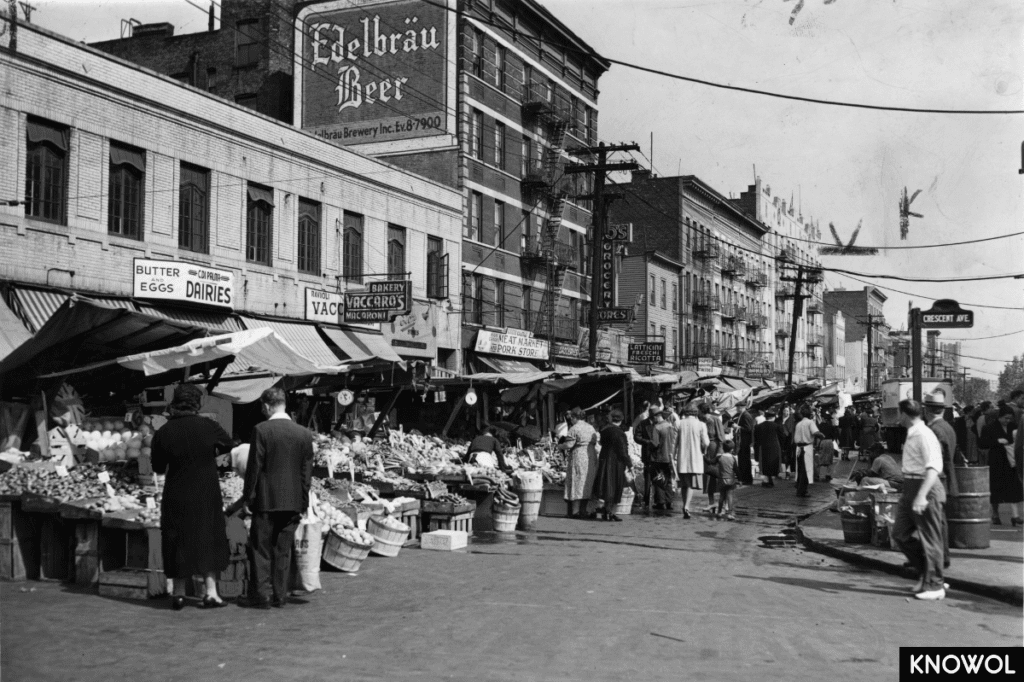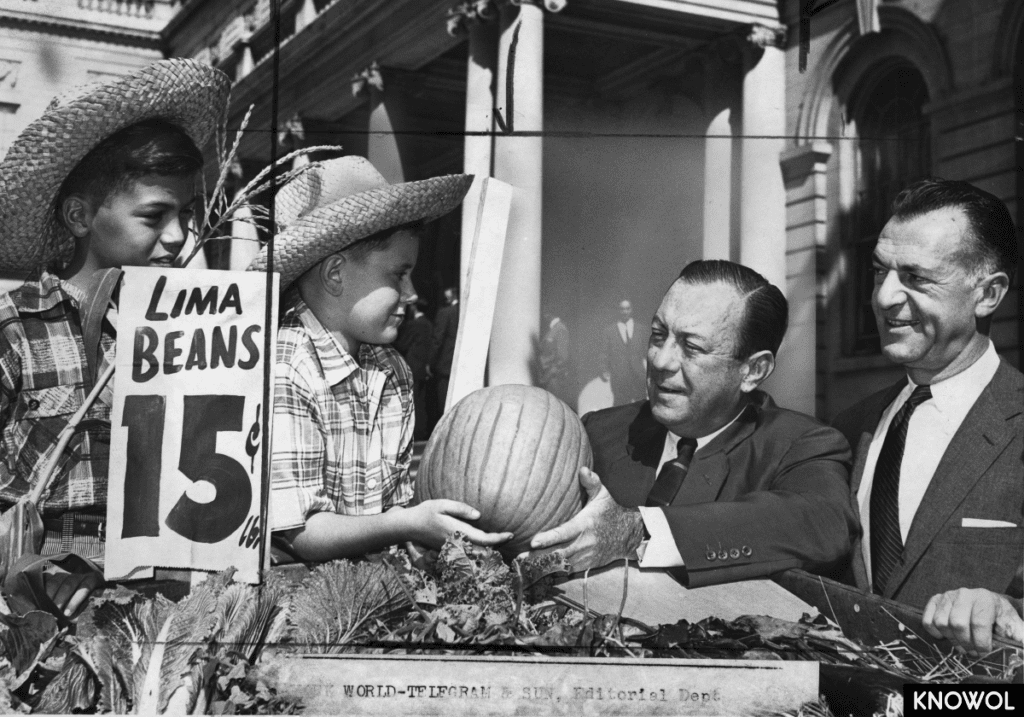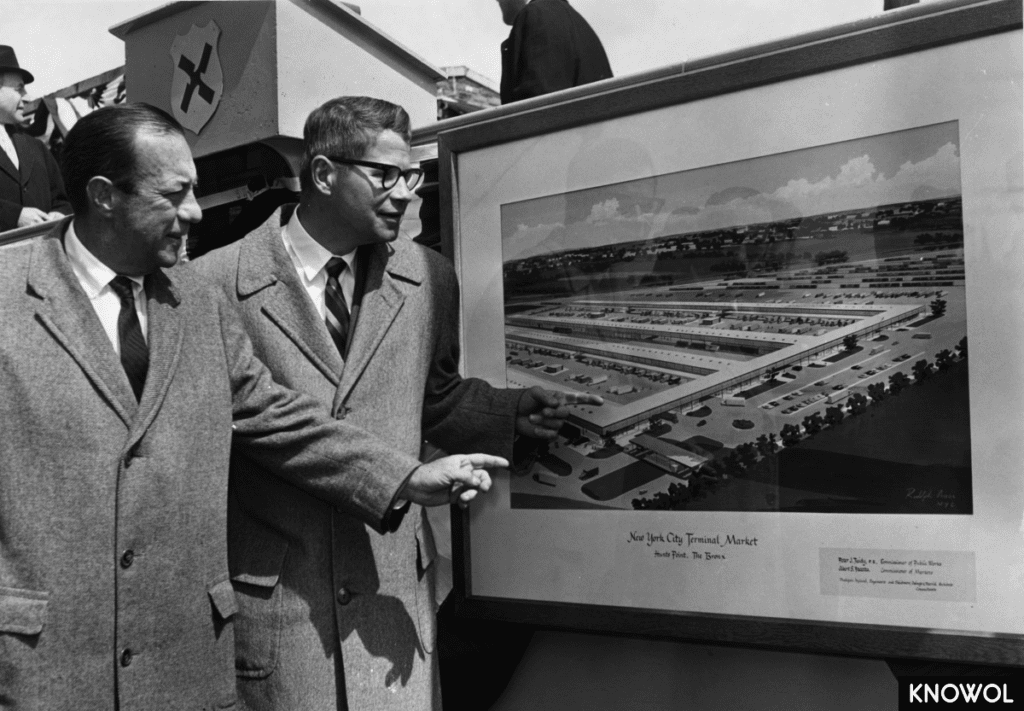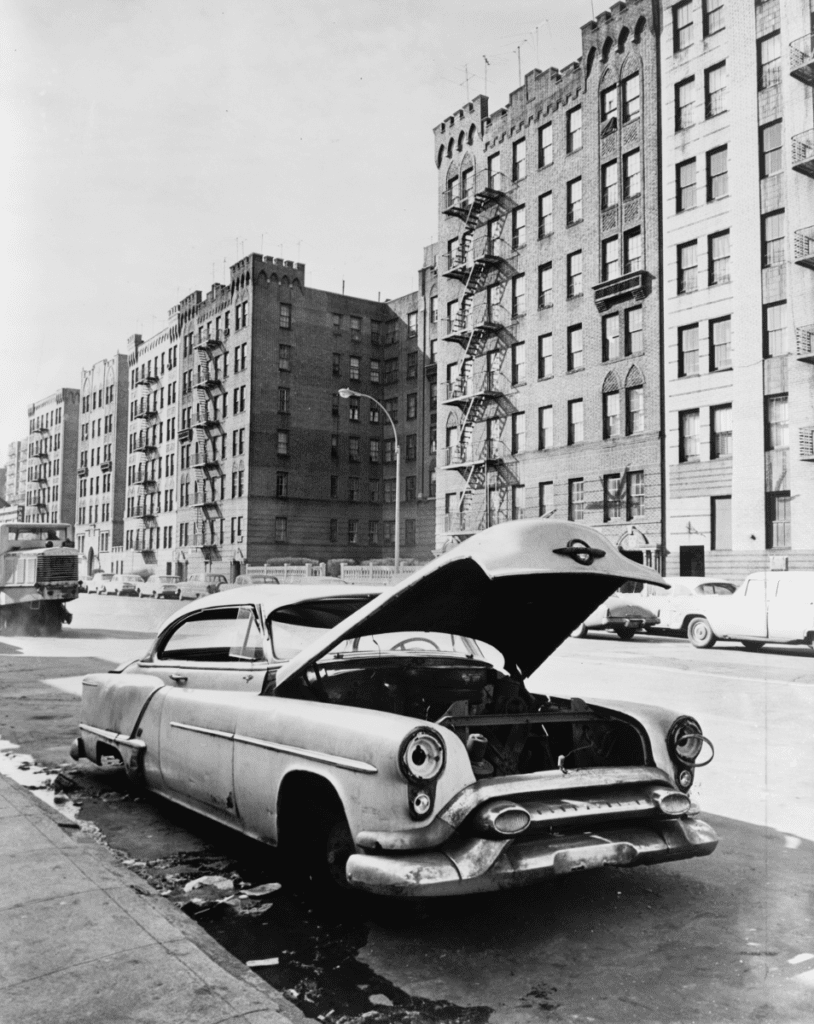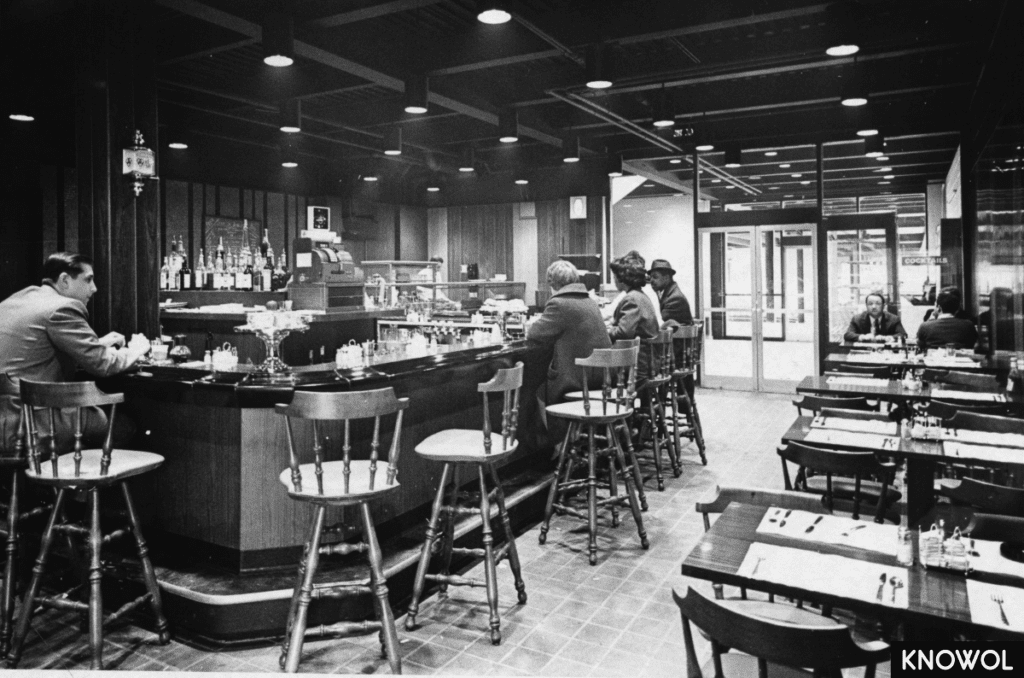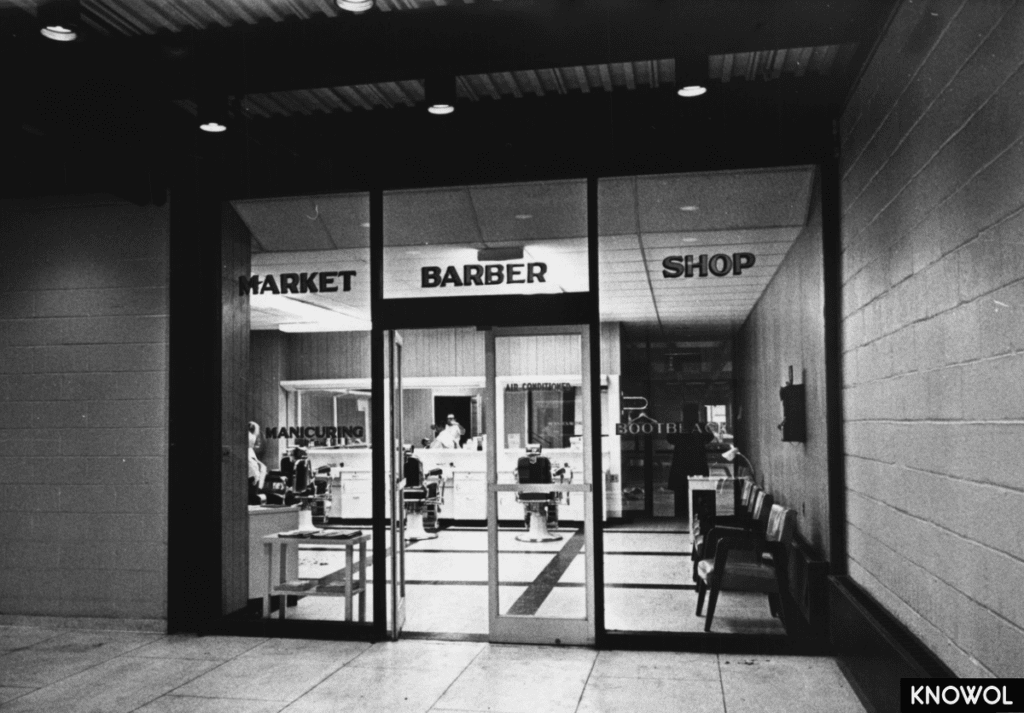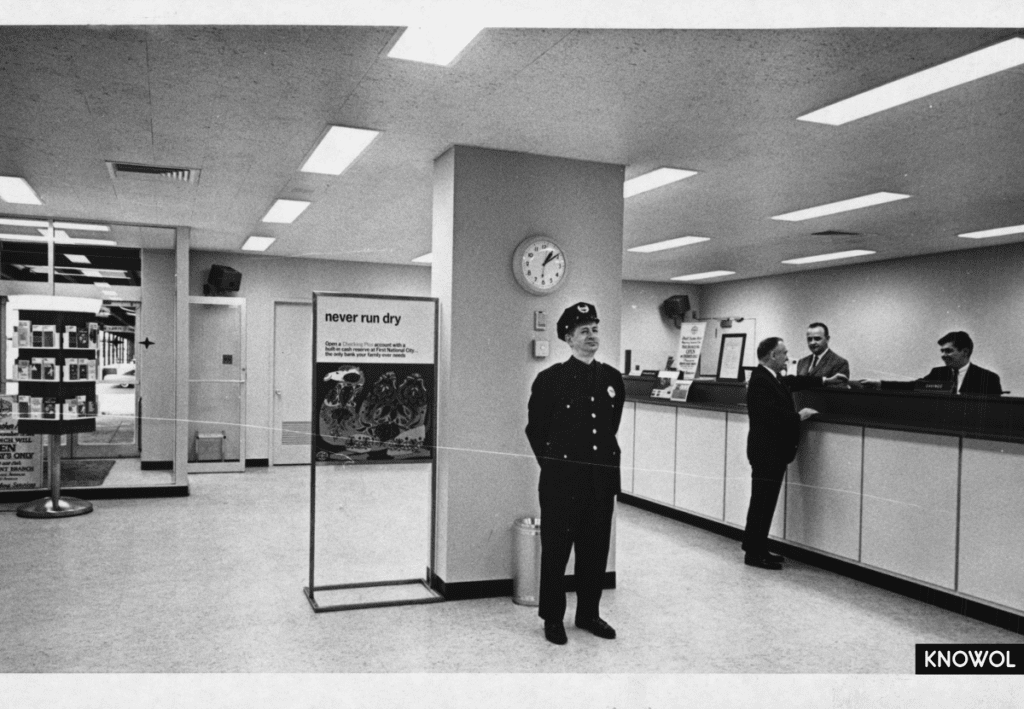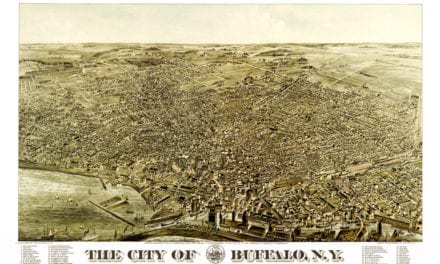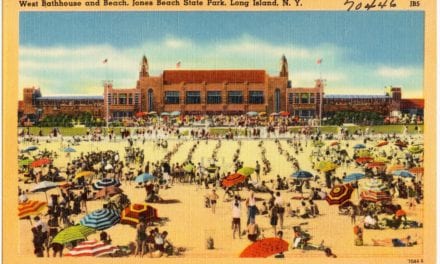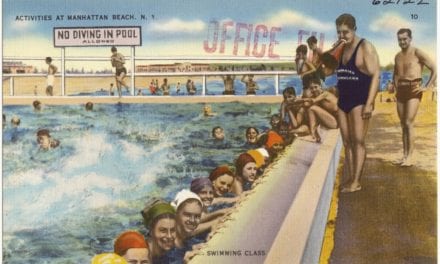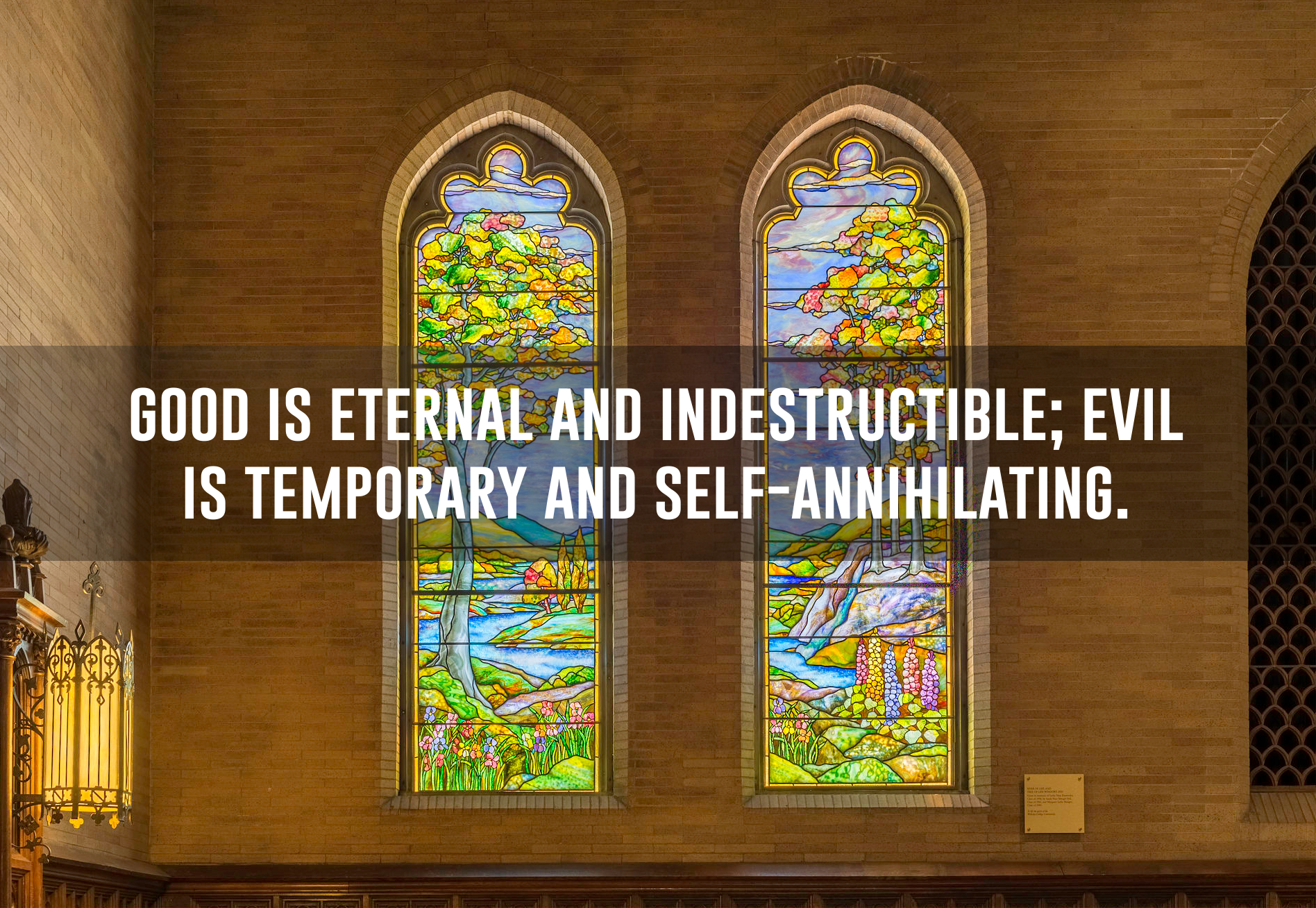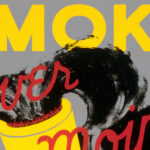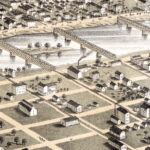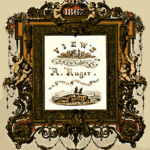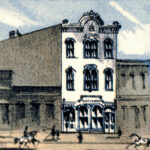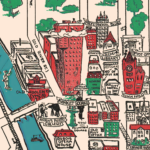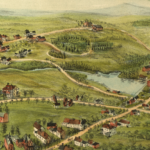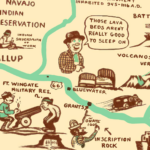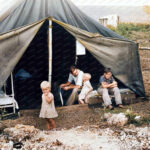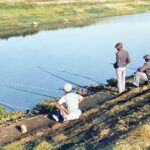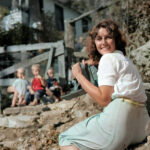This series of images offers an authentic glimpse into the Bronx’s rich heritage and its progression throughout the early 20th century. Whether you have personal connections to the Bronx or a general interest in its past, this collection will give you valuable insight into its historical culture and development. Embark on a journey through the Bronx as we explore its transformation over the years via this series of vintage photographs, offering a unique glimpse into its rich heritage and evolution.
Bronx Lake from New York Zoological Park, 1908
Bronx Lake, within the New York Zoological Park, depicted in a photograph from May 21, 1908. Bronx Lake is an artificial lake within the what is now the Bronx Zoo. It was created in the late 19th century and served as a popular recreational spot for visitors who enjoyed boating on its tranquil waters, as you can tell by the crowded boat landing seen here.
Boating on Bronx Lake, 1908
This vintage photo of the Bronx Lake was captured on May 21, 1908. The lake was originally constructed as a reservoir to supply water to the city in the late 19th century, and the reservoir played a vital role in meeting the increasing demand for water as the population of the Bronx grew.
Over time changes in water management practices and the development of more advanced infrastructure led to alterations in the purpose and management of Bronx Lake. In the mid-20th century, the reservoir was no longer used as a primary water source and was repurposed for recreational and ecological purposes, as seen in this historic photograph.
Group of Newsies Hanging at the Victoria Theatre, 1910
In this photograph captured in October 1910, a group of newsies can be seen congregating near the Victoria Theatre, located at the intersection of Broadway and 42nd St in Long Acre Square. These young newspaper sellers patiently wait for the theatre performance to conclude, showcasing a glimpse into the vibrant street life of the era and the camaraderie among these industrious youths. Newsies, also known as newsboys, were predominantly young boys who sold newspapers on the streets of major cities in the late 19th and early 20th centuries. Often facing challenging circumstances, such as poverty or orphanhood, newsies formed tight-knit communities and developed their own unique subculture. Their pivotal role in the newspaper industry and their spirited advocacy for fair working conditions were highlighted during the Newsboys’ Strike of 1899 in New York City, a significant moment in labor history.
Midsummer Day at the Park, 1911
The Midsummer Day Festival was an annual event held at Pelham Bay Park in the Bronx during the early 20th century. It was a festive celebration that took place on or around the summer solstice, marking the midpoint of the year. The festival aimed to bring together community members for a day of merriment, outdoor activities, and enjoyment of the park’s natural beauty. It featured various attractions such as picnics, music, games, and performances, providing a spirited gathering for people to celebrate the summer season in a joyful and festive atmosphere. This photo shows five girls from the Washington Irving High School in New York City, having a picnic at the Midsummer Day Festival on June 23, 1911.
Rings and Poles At a Bronx Park, 1911
This scene of carefree joy shows students from the Washington Irving High School engaged in playful activities on the equipment at Pelham Bay Park. Taken on June 23, 1911, during the Midsummer Day Festival, the image showcases the exuberant spirit of the event, as the students can be seen reveling in the festive atmosphere that permeated the park on that summer day. The parks “Rings and Poles” provided not only a source of amusement but also an opportunity for the children to develop their physical coordination, strength, and balance.
Pass Ball Relay, Pelham Bay Park, 1911
In this historical photograph girls from Washington Irving High School can be seen participating in a pass ball relay during the Midsummer Day Festival held at Pelham Bay Park. The pass ball relay involved the passing of a ball overhead between participants, bringing a sense of friendly competition and comradery to the festivities.
Gladys Lamb & Norval Baptie, 1917
This photograph captures Gladys Lamb and Norval Baptie as they perform an “exhibition of fancy and acrobatic skating” during an “ice carnival” at Van Cortlandt Park in the Bronx, New York City, on February 17, 1917. The image showcases their impressive skating skills and daring maneuvers, delighting the audience with their captivating performance.
Van Cortlandt Park, located in the Bronx, New York City, is one of the largest parks in the city, spanning over 1,146 acres. It holds the distinction of being the third-largest park in the New York City park system. The park’s rich history dates back to the 17th century when it served as a Dutch colonial plantation. The park’s land was originally part of the Van Cortlandt family’s estate. The Van Cortlandt House, a prominent landmark within the park, was built in 1748 and is now the oldest surviving building in the Bronx. The park also played a significant role during the American Revolutionary War, serving as a strategic location for military encampments and skirmishes.
Mother & Child in Bronx, New York, 1936
In this photograph, we see Mrs. Max Hochfield, a prospective New Jersey homesteader who currently resides in the Bronx, New York. The image, captured in December 1936, provides a glimpse into the life of a homesteader during that era. A homesteader typically refers to an individual or family who obtained land, often through a government program, with the intention of establishing a self-sufficient farm.
Mothers Talking and Child Playing, 1936
This photograph captures a candid moment on 139th Street, just east of St. Anne’s Avenue, in the Bronx, New York, in November 1936. In the scene, mothers can be seen engaged in conversation while a child plays in the gutter. In the photo you can see an “Ask for C. Maggiolo Milk” in front of a shop, while another child curiously peering into the store’s window. This snapshot offers a glimpse into everyday life, showcasing the dynamics of the community and the ordinary moments shared between mothers and children in the Bronx during this period.
Children Playing in the Gutter, 1936
The child who has peering into the store window has made their way over to the gutter to play while the parents continue to chat on 139th street.
Italian Pushcart Market, 1940
Italian pushcart market, Arthur & Crescent Avenues, Bronx. 1940.
Italian pushcart markets were an integral part of the cultural fabric and economy of immigrant communities in the Bronx during this era. They provided a means for small-scale entrepreneurship and offered residents access to a wide range of affordable fresh produce, baked goods, and various Italian specialties. These bustling markets, located in immigrant neighborhoods, were not only places of commerce but also served as social gathering spots, where neighbors could connect, share stories, and preserve cultural traditions. Italian pushcart markets served as vital economic and social hubs, providing a means for Italian immigrants to sustain their communities while preserving their cultural heritage.
They were called “pushcart markets” because the vendors were often working out of mobile stalls. They would push their carts through the streets to set up at different markets. The carts were designed to be lightweight and maneuverable, allowing the vendors to easily transport their merchandise and set up temporary market spaces. These pushcarts created a dynamic and ever-changing marketplace throughout the streets of the Bronx and other urban areas in the U.S.
School Playground (PS 122), 1955
This photograph captures a school playground located at PS 122 in the Bronx, specifically at the intersection of Kingsbridge Rd. and Bailey Ave. The image, taken on February 9, 1955, showcases the playground’s layout and design, which is referred to as “Playground II.” The playground served as a recreational space for the students of PS 122, offering a dedicated area for physical activities, play, and social interaction.
New York City Mayor Robert F. Wagner, 1958
This photograph captures New York City Mayor Robert F. Wagner as he purchases a pumpkin from Arthur Conklin at a farmer’s market in the Bronx in 1958. Mayor Wagner, who served as the city’s mayor from 1954 to 1965, was actively involved in community engagement and often participated in local events and activities.
The photo was originally taken by The World Telegram and Sun, a prominent New York City newspaper that was published from 1931 to 1966. It was formed as a result of a merger between two other newspapers, The Evening Telegram and The Evening Sun. It was known for its comprehensive reporting, engaging features, and strong editorial stance. The newspaper had a significant influence on public opinion in the city and played a role in shaping the media landscape during its existence. However, due to changing market dynamics and declining circulation, The World Telegram and Sun ceased publication in 1966.
New York City Terminal market, 1962
New York City Mayor Wagner and U.S. Secretary of Agriculture Orville Freeman look at an architect’s drawing of the new Hunts Point Market during ground breaking ceremonies in the Bronx, 1962. Hunts Point Market, also known as the New York City Terminal Market, played a significant role in the city’s food distribution system. Hunts Point Market became a vital hub for wholesale produce distribution, serving as a centralized location for farmers, distributors, and retailers to access fresh fruits, vegetables, and other food products. The groundbreaking ceremony marked an important milestone in the establishment of the Hunts Point Produce Market, which continues to operate and support the city’s vibrant food economy today.
Macombs Road, Bronx, 1964
An abandoned car on Macombs Street in the Bronx, 1964. The vehicle looks to be a 1953 Oldsmobile Super 88.
Cocktail Bar at Hunts Point Market, 1967
Hunts Point Market has a long and storied history, dating back to its establishment in 1967. The market was intended to centralize and modernize New York City’s wholesale food distribution system, consolidating several smaller markets scattered across the city into one centralized location. The market complex accommodated various businesses, including this cocktail bar and restaurant, providing a space for market visitors and workers to relax and dine.
Barbershop at Hunts Point Market, 1967
Barbershop at Hunts Point Market, the Bronx, New York City, 1967. Barbershops played a significant role in the social and cultural history of New York City. In the early 20th century, barbershops served as important gathering places for men, providing not only grooming services but also a space for conversation, camaraderie, and community bonding. These establishments played a unique role in shaping urban social dynamics and served as important hubs of male social interaction and networking.
First National Bank at Hunts Point Market, 1967
First National Bank at Hunts Point Market, the Bronx, New York City, 1967. The presence of the First National Bank branch within the market complex provided a convenient and accessible location for market participants to handle their financial affairs.
Throughout the early 20th century, the Bronx underwent significant transformations that shaped its landscape and contributed to its emergence as a dynamic borough within New York City. As a result of urbanization, the Bronx experienced rapid population growth, with communities of diverse cultural backgrounds establishing roots and contributing to the borough’s vibrancy. We hope you enjoyed this short tour through the city’s past. Subscribe to our newsletter for more.

